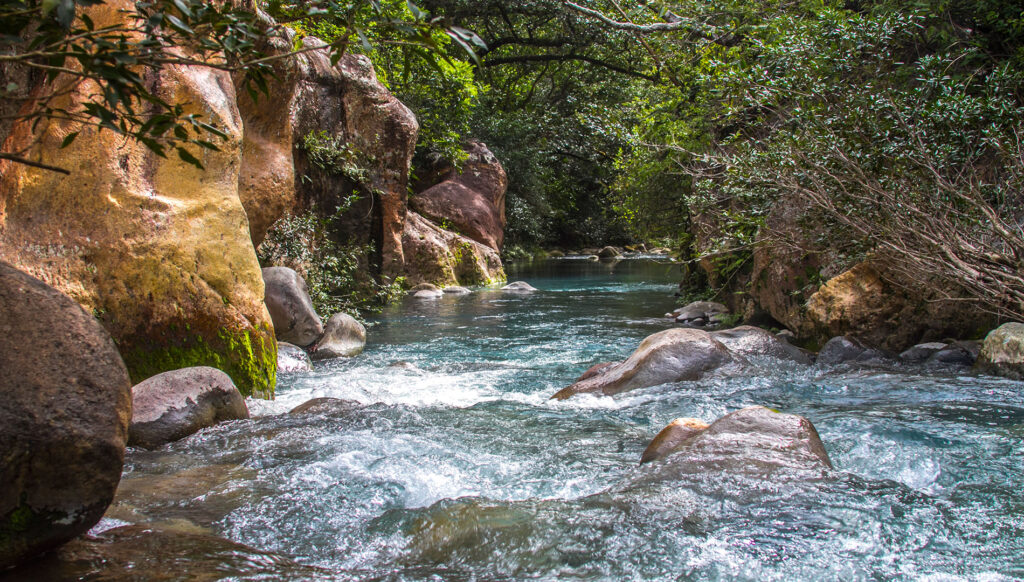Quick Guide
December – April
Peak season brings crowds (mostly from the U.S. mainland) and higher rates.
April – May
These months mark the shoulder season, and while crowds diminish, prices tend to remain steady.
June – November
Low season coincides with hurricane season. You’ll find fewer crowds and lower prices. In July, local families tend to vacation and beach towns get busy.
Visas
Travelers from outside the United States will need a valid passport, as well as ESTA (Electronic System for Travel Authorization) eligibility or a full visa.
Money
Currency is U.S. dollars and ATMs are widely available.
Travel Health
Find specific information on Puerto Rico’s Covid-19 travel rules at DiscoverPuertoRico.com. Before traveling, research and prepare for what to do if you get sick while away.
Getting Here
Puerto Rico is primarily served by Luis Muñoz Marín International Airport (SJU); cruise ships dock at Old San Juan and Ponce Piers.
Getting Around
If you’re staying primarily in San Juan, taxis and ride shares are easily accessible. Should you explore further afield, a car rental is recommended — though be aware some road conditions are poor, and traffic can be heavy. Planes and ferries are used to reach the outer islands of Vieques and Culebra.
Local Lingo
Spanish and English are the official languages of Puerto Rico, though Spanish is dominant. English is understood at hotels and attractions but expect to speak Spanish outside major tourist hubs.
Must-Have Apps
Google Translate; Uber; GPSMYCITY; Citywiz Puerto Rico
Insider Tips
Less than a two-hour drive northwest of San Juan, you’ll find the caves and trails of Guajataca Forest Reserve, nearby Guajataca Lake, and a path through a famed former railroad tunnel, which emerges onto the mesmerizing Guajataca Beach.
December – April
Peak season brings crowds (mostly from the U.S. mainland) and higher rates.
April – May
These months mark the shoulder season, and while crowds diminish, prices tend to remain steady.
June – November
Low season coincides with hurricane season. You’ll find fewer crowds and lower prices. In July, local families tend to vacation and beach towns get busy.
Visas
Travelers from outside the United States will need a valid passport, as well as ESTA (Electronic System for Travel Authorization) eligibility or a full visa.
Money
Currency is U.S. dollars and ATMs are widely available.
Travel Health
Find specific information on Puerto Rico’s Covid-19 travel rules at DiscoverPuertoRico.com. Before traveling, research and prepare for what to do if you get sick while away.
Getting Here
Puerto Rico is primarily served by Luis Muñoz Marín International Airport (SJU); cruise ships dock at Old San Juan and Ponce Piers.
Getting Around
If you’re staying primarily in San Juan, taxis and ride shares are easily accessible. Should you explore further afield, a car rental is recommended — though be aware some road conditions are poor, and traffic can be heavy. Planes and ferries are used to reach the outer islands of Vieques and Culebra.
Local Lingo
Spanish and English are the official languages of Puerto Rico, though Spanish is dominant. English is understood at hotels and attractions but expect to speak Spanish outside major tourist hubs.
Must-Have Apps
Google Translate; Uber; GPSMYCITY; Citywiz Puerto Rico
Insider Tips
Less than a two-hour drive northwest of San Juan, you’ll find the caves and trails of Guajataca Forest Reserve, nearby Guajataca Lake, and a path through a famed former railroad tunnel, which emerges onto the mesmerizing Guajataca Beach.
DID YOU KNOW?
Grab your sunscreen! Everyone knows Puerto Rico has phenomenal beaches, but it’s less known that there’s actually a whopping 270 miles of beaches to enjoy.
Marriott Bonvoy Offers & Promotions
Enjoy exclusive offers on hotels stays and experiences in Puerto Rico
Offers
Where to Stay
Book Over 30 Hotel Brands Around the World
10 Hotels
10

















